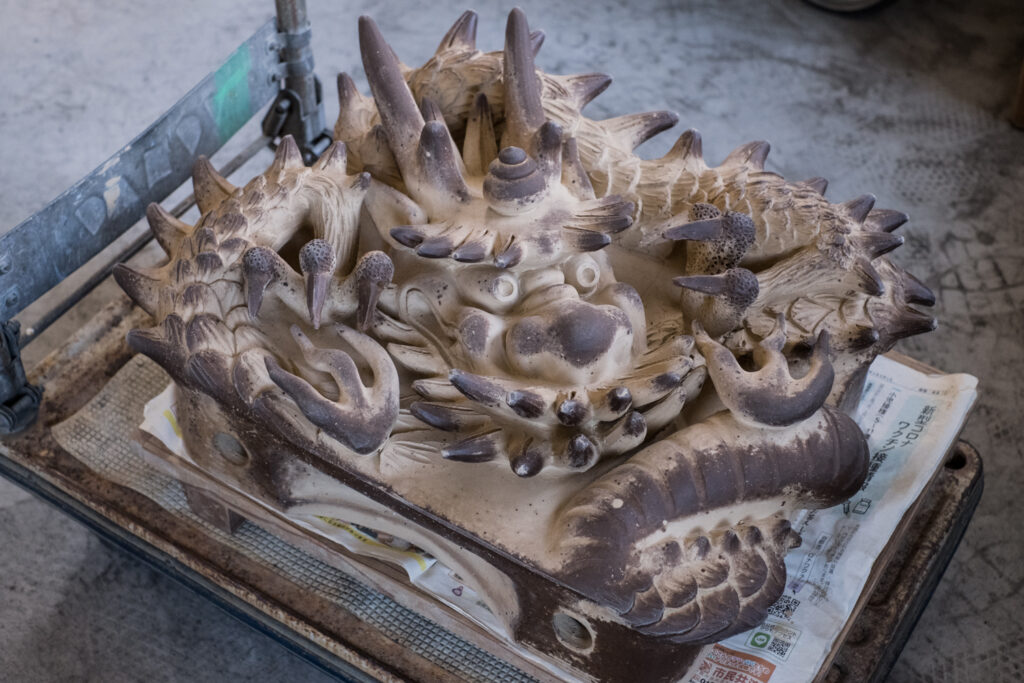Blog
Interview with Masahisa Asada, master craftsman of handmade Kyo-gawara
2022/10/18

Please tell us a little about your background. What in your personal life has influenced you to choose your career?
At that time, it was customary for eldest sons to take over their family business, and I wasn’t against taking over my family business myself, so it was a natural decision for me. I also studied architecture at university, so now I’m able to make use of my drawing skills as well.
What was the biggest challenge that you encountered on your professional journey?
It was the worry of not being able to do my work anymore and the fear that my generation may be the last one to do the job that I took over.
What do you love about what you do?
I like working on challenging commissions that have this repeated trial-and-error process of figuring things out, expressing them in drawings and then making them into products.
What are the sources of inspiration for your creative work?
There is an expression in Japanese, onkochishin, which means “Learning new from the past”. For me, it’s to go back to ancient architecture and technologies, and derive new ideas, techniques and ways of thinking from them.
How have the events of the past couple of years affected your work and your industry?
Even before Corona, there was a shift away from roof tiles, which are avoided because they are two to three times more expensive to install than new construction materials other than clay. Tile technology has reached the highest standards. It takes time for people to understand this.
Please tell us why you would recommend your work/products to craft and design lovers. What positive impact they can make on people’s lives?
We are developing the use of tiles not only as a roofing material but also as flooring and wall material.
We also see great potential in tile chips, which are made from finely crushed roof tile waste. Tile chips are made by recycling old tiles that had previously been discarded due to lack of use.
Also, why don’t you order Onigawara, demon face tiles, for your home? They are usually placed at the edge of roofs to ward off evil spirits, but they are also highly decorative. Or how about making your own one-of-a-kind Onigawara for interior decoration?

If you plan to visit the atelier and learn more about Kyo-gawara, book your experience here: Asada Kawara Factory
Interview, translation & images by Anastasiya Bulkavets (ArigatoCreative.co)



